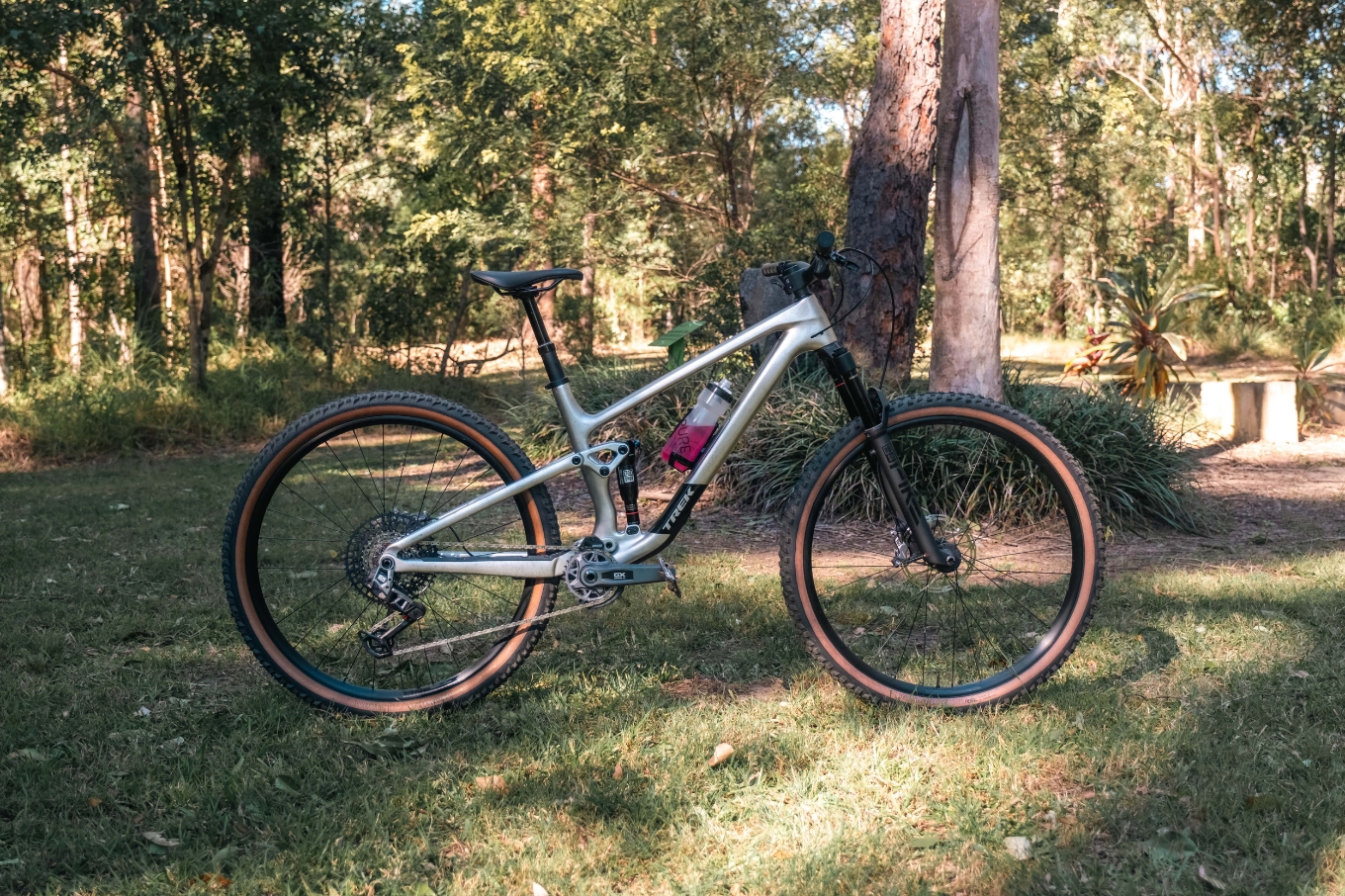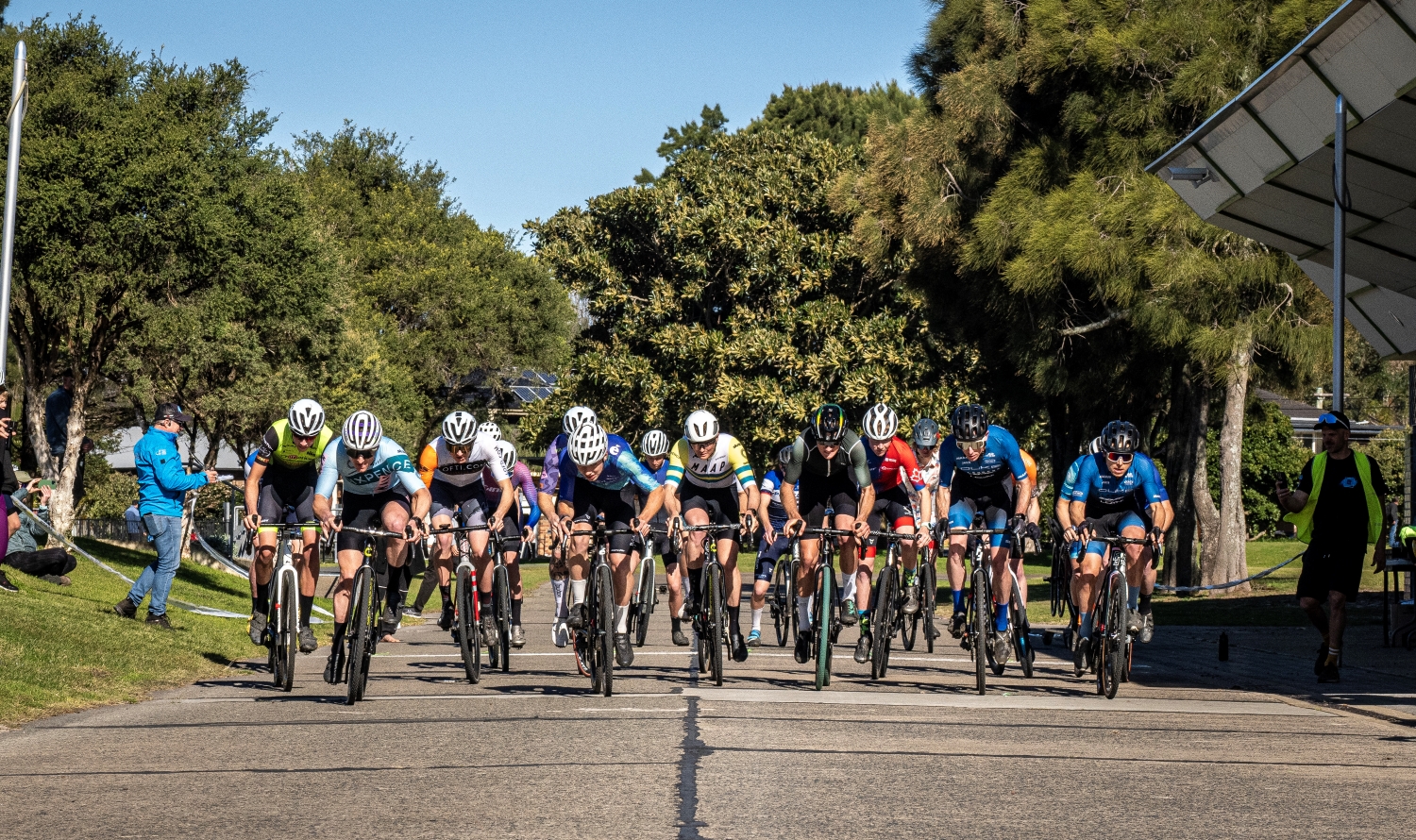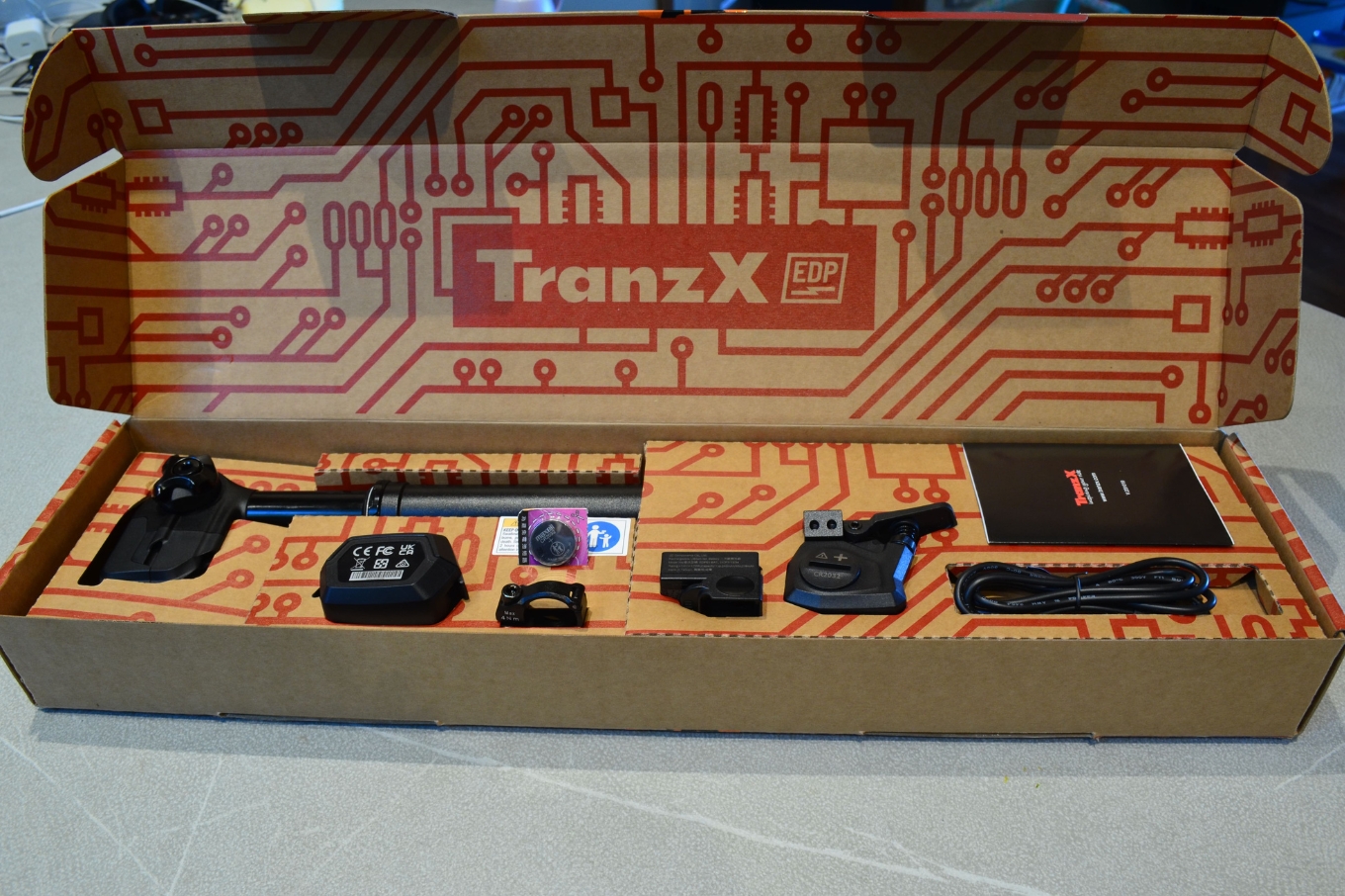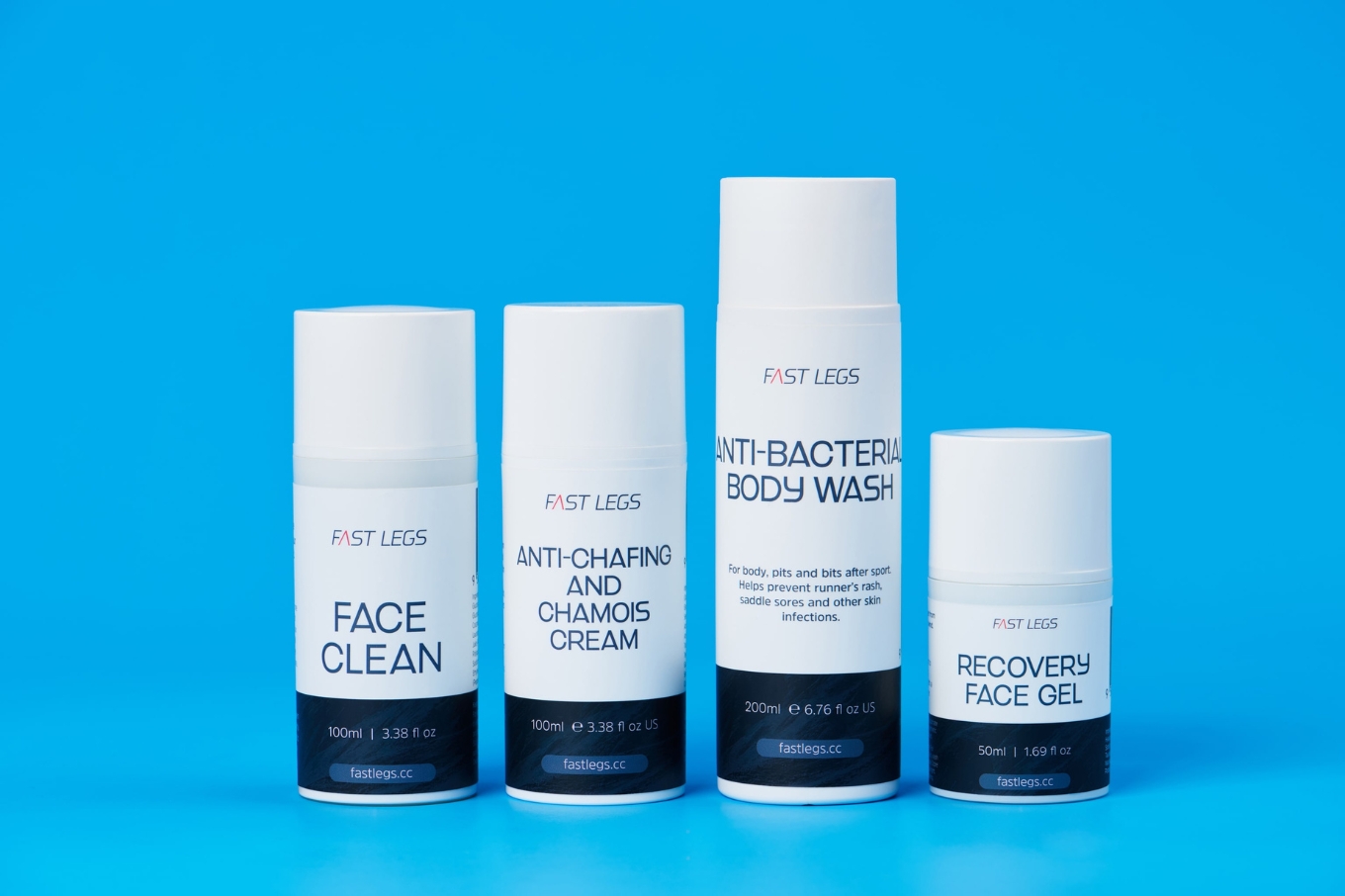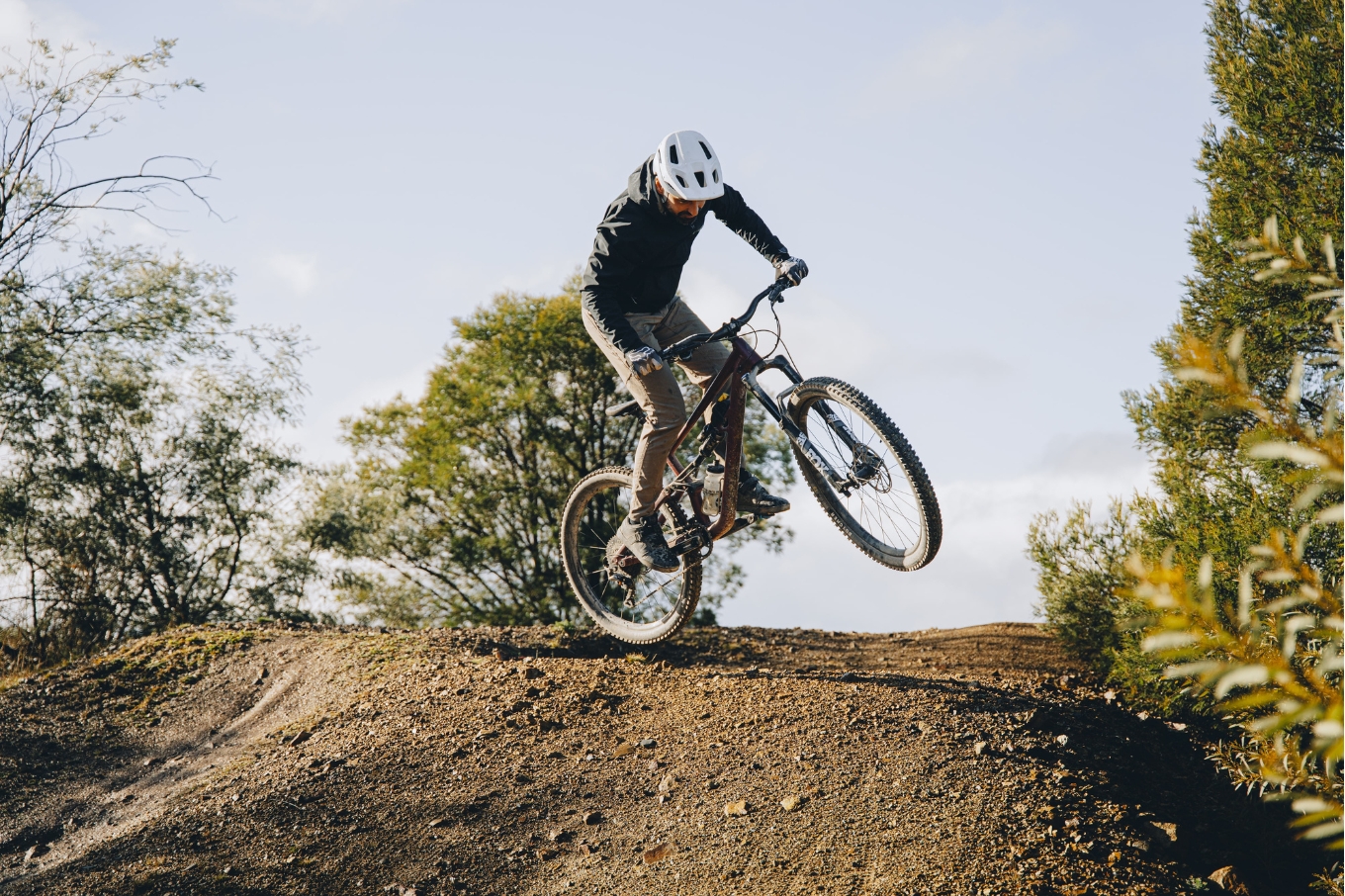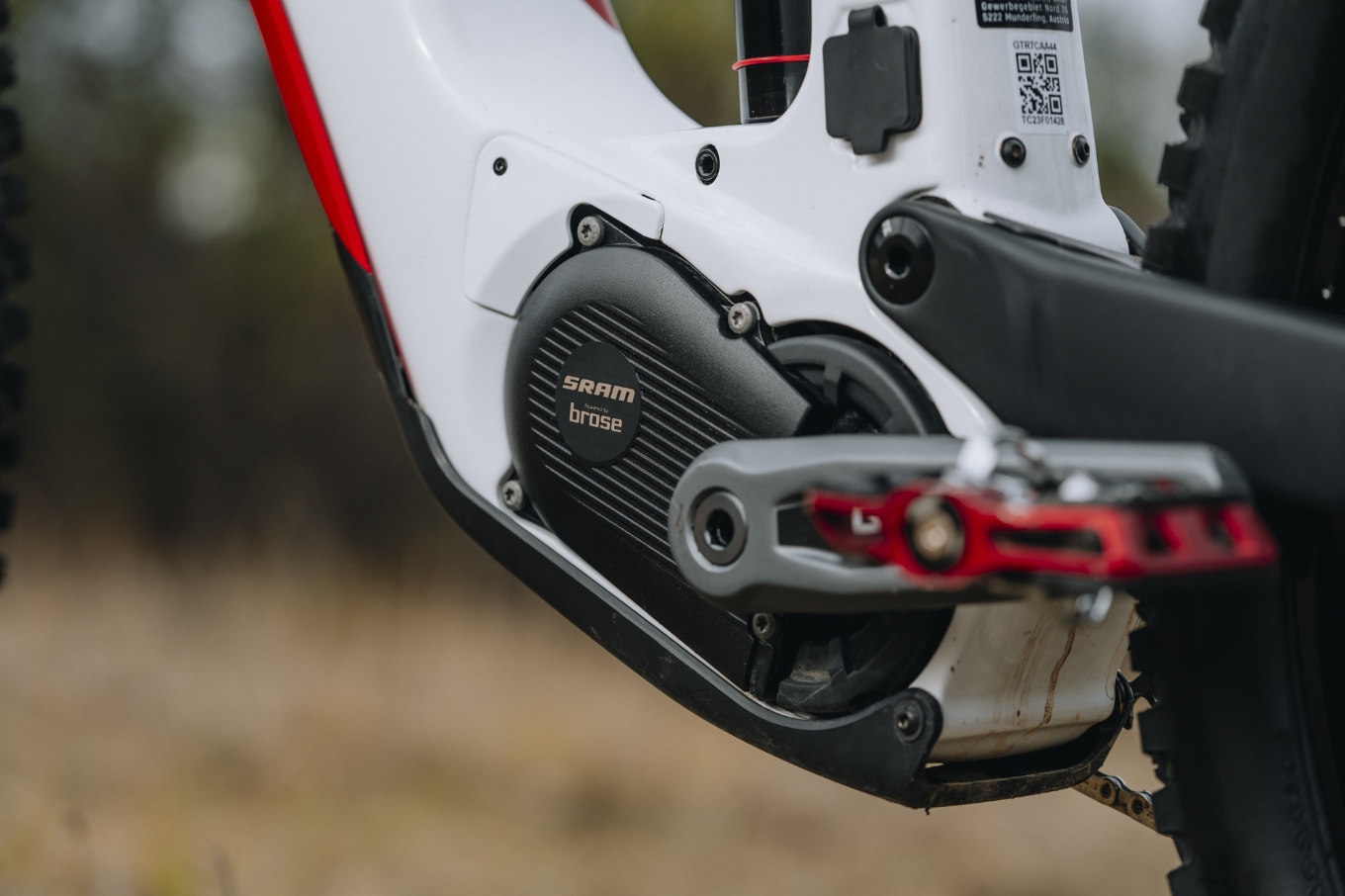FIRST LOOK: DT Swiss XMC 1200 trail wheels
Have you thought about wider rims on your mountain bike? DT-Swiss have used pro feedback to make what could be the ideal MTB wheels
There has been a fair bit of noise over the past two years about wider rims. The theory being that a narrower rim and a wider tyre creates excessive tyre roll, and doesn't optimise the amount of cushioning we can have, for the weight of the rim and tyre that we are pushing around. So while we knew the benefits of a wider tyre, with lower rolling resistance and better cornering traction and more 'float' over trail debris, mounted on a narrow rim (for sake of argument, something with 21mm or less internal width) it makes it hard to get the full advantages.
The explosion of carbon rim manufacturing out of China has fuelled the move, with options availble in all sorts of sizes. Those rims came with their own question marks about quality control and durability. Brands like NoTubes brought wider options out with wheels like the Bravo, and have since made their aluminium rims wider too.
If you're familiar with DT-Swiss you will know they make some of the best parts for bicycle wheels in the world. From the star-ratchet mechanism found in their top hubs, to the industry leading 240 design, and of course their range of spokes. It's hard to find a cycling workshop with a stack of DT spoke boxes. Their rims have been less well-known in comparison, until more recent years. With riders like Richie Rude (and the rest of the Yeti Factory Team) on DT rims, plus Nino Schurter and the Scott SRAM Team on them, it might be worth paying more attention to their range.
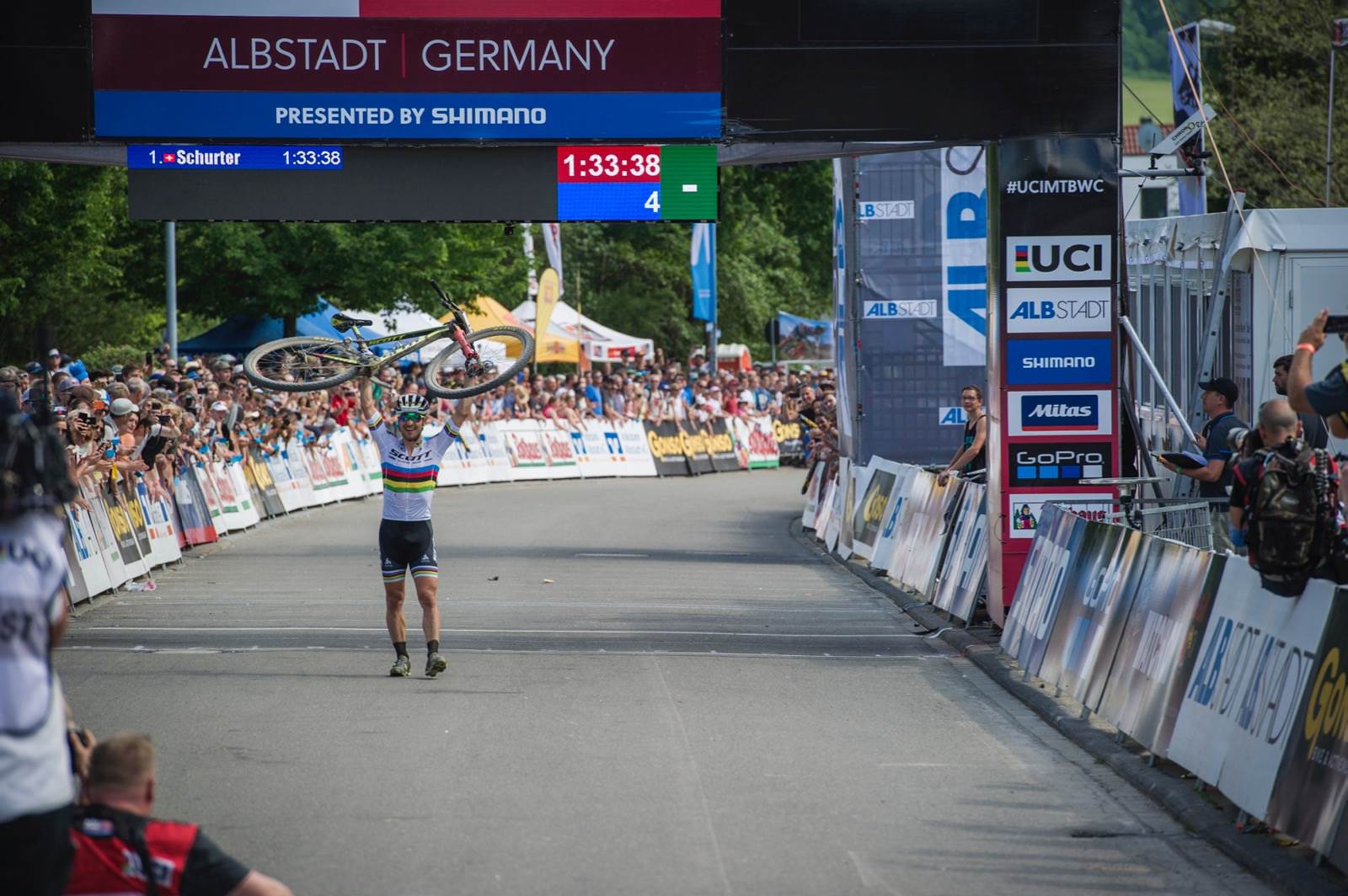
Go Wide with DT-Swiss
It's well-known that gravity riders will benefit from a wider rim, something with about a 30mm internal width. But when Swiss XC professionals started reaching for the trail wheels from their sponsors DT-Swiss, the engineers at the Swiss wheel company decided it was time to do some testing.
Nino Schurter was known for his use of the 27.5" carbon tubulars. When he moved to the new Scott Spark, not only did he move up a wheel size to 29", he also moved to clinchers on carbon wheels. That was the fastest choice for Rio, and the change proved highly successful. BUt that success ran through all of 2017, where Schurter won every World Cup, and the World Championships.
Despite the weight penalty of the XRC 1200 Spline, Schurter chose to run the 36mm wide, 30mm internal XMC 1200 spline wheels – which we have just received to test. Florian Vogel was racing on 30mm trail wheels too. Check out the testing they did with DT-Swiss.
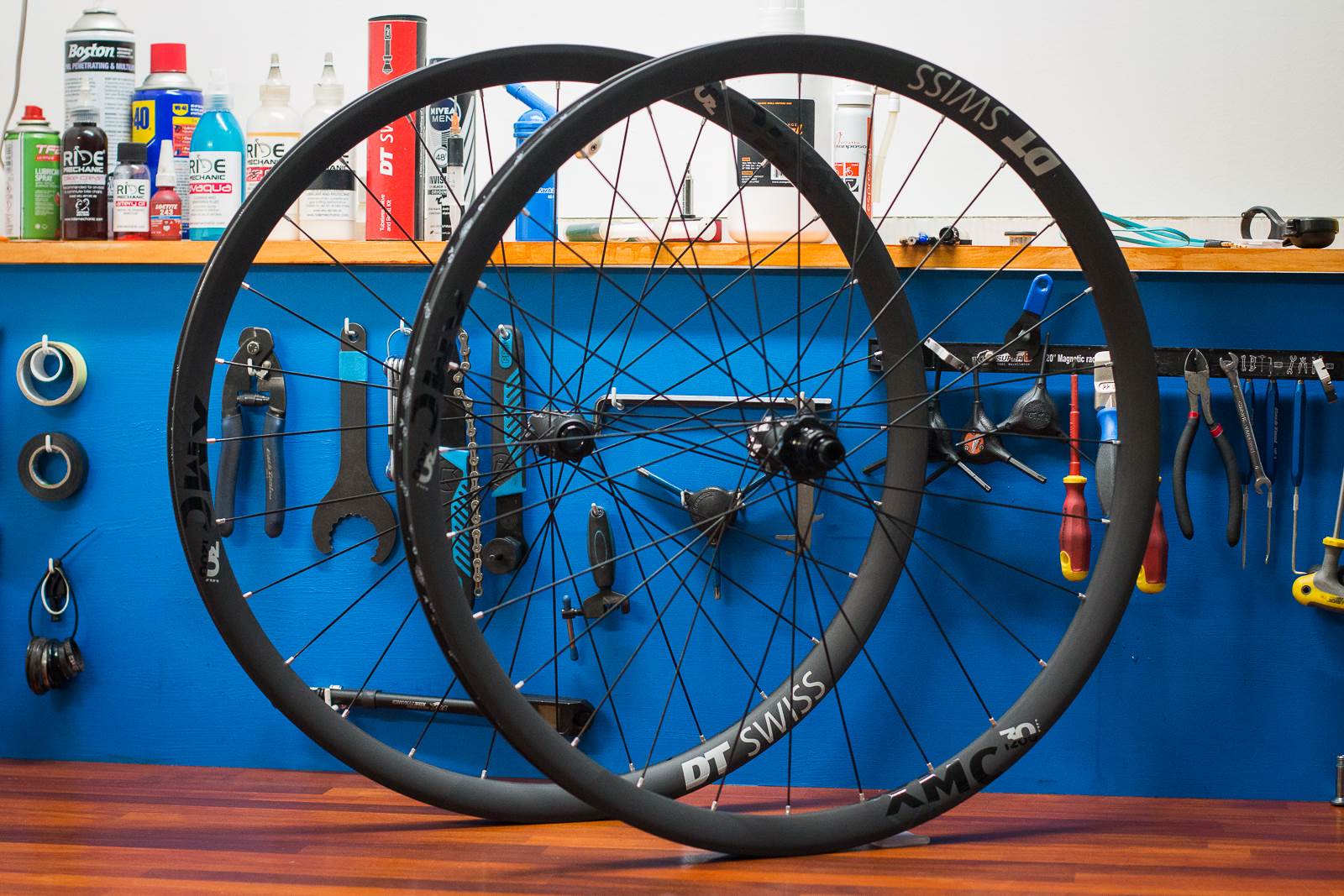
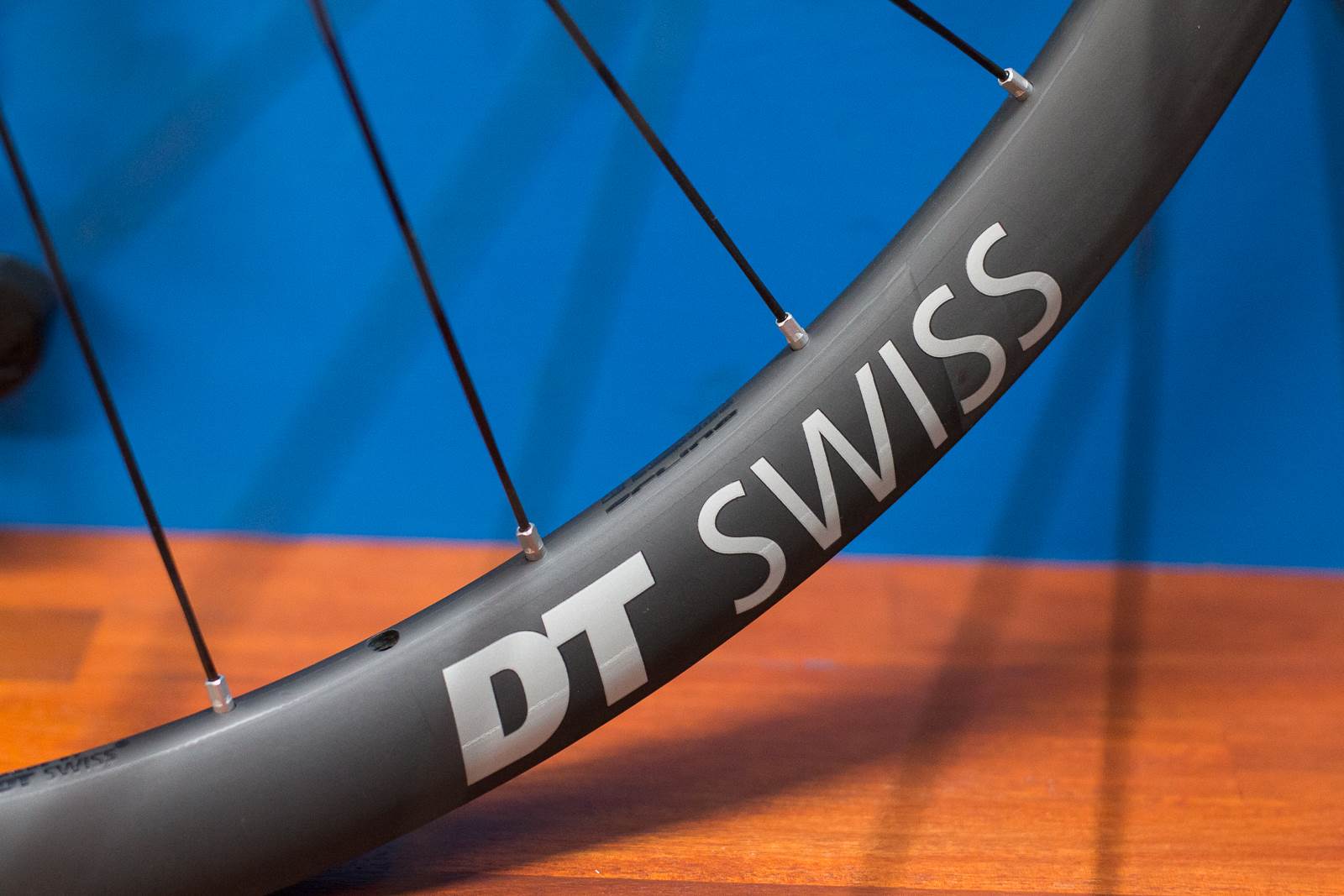
A closer look at the XMC 1200 wheels
From top to bottom, or hub to rim, the DT-Swiss XMC 1200 wheels are a classy piece of kit. The hubs are 240s models, with Boost spacing and Centrelock dis attachments for our sample model.
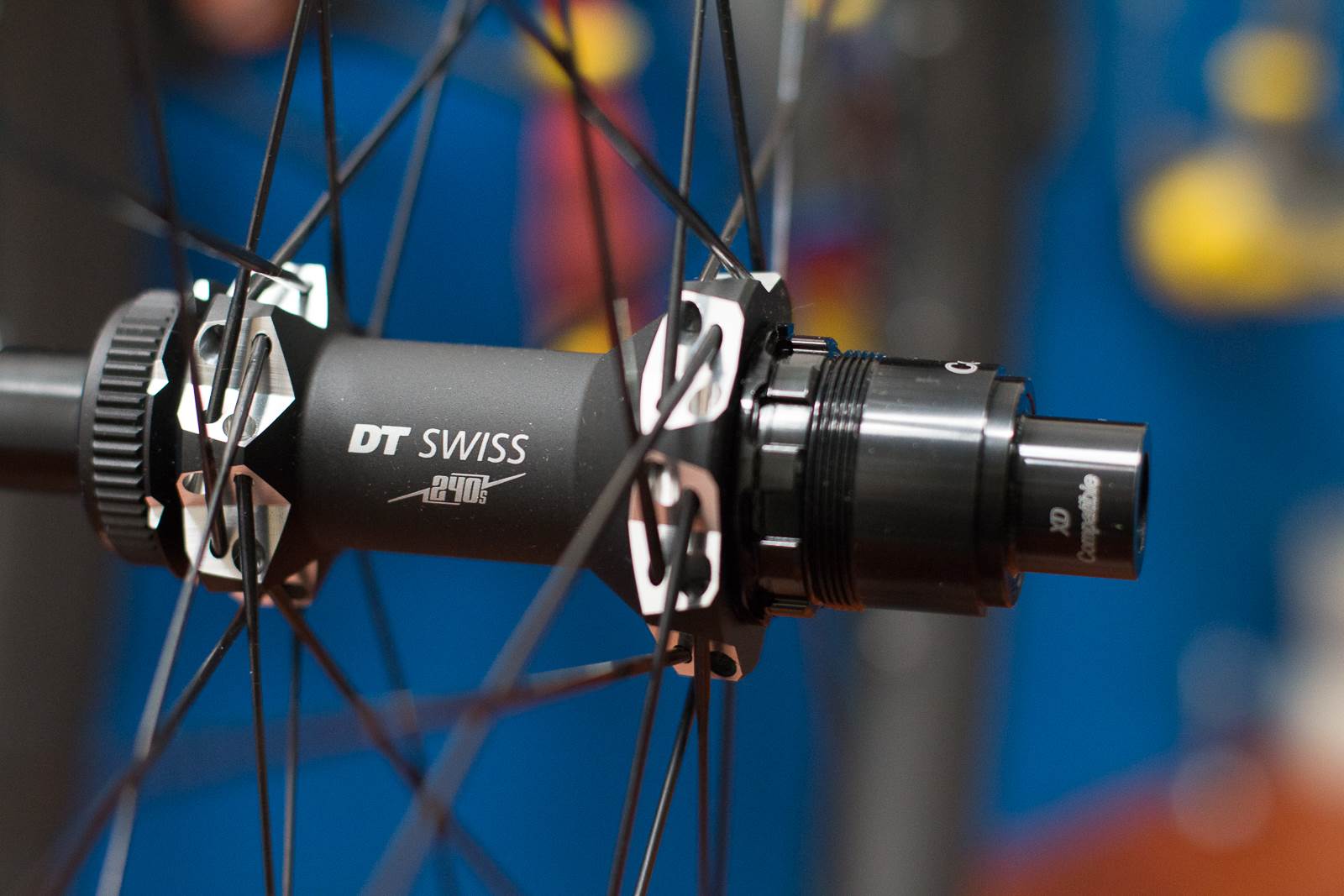
The spokes are straight pull, as the bend in J-bend spokes are the weakest point. So while it always seems like a bit mroe bother having straight pull spokes – they do make for a longer-lasting wheel.

The DT wheels use Centrelock for the rotor attachement. This is lighter, and easier for travel and changing rotors. If it’s not for you, adaptors are included with the wheels. Along with valves and spoke keys – and a manual of course.
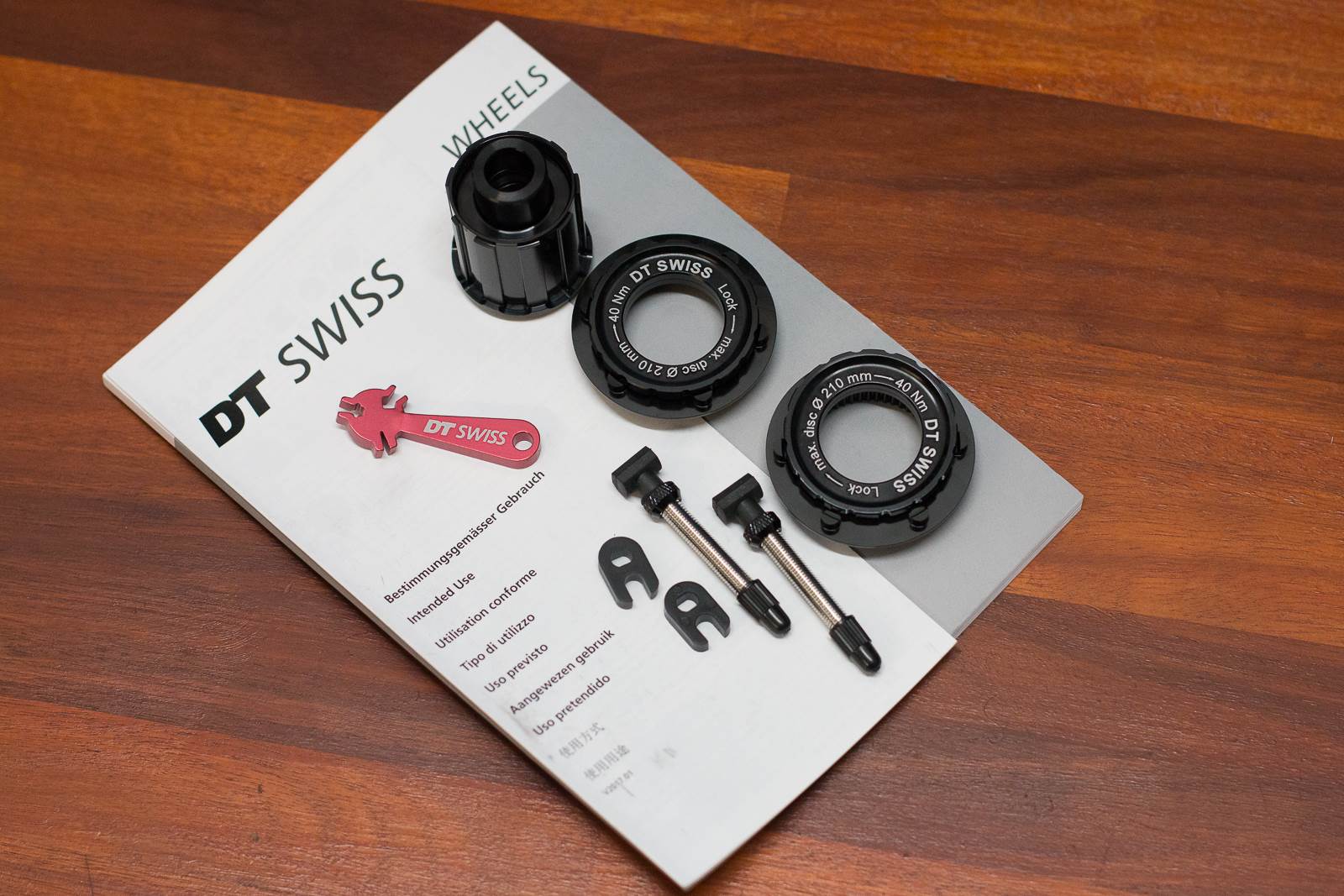
DT-Swiss state the wheels should weigh 712g for the front and 835g for the rear in this configuration with 29″ rims and Boost hubs. We got 713g and 838g but that’s close enough.
With the digital calipers on, the internal measurement is very uniform all the way around at just a tiny bit under 30mm. But these calipers could be a tiny bit out too.

The wider rim should support the tyre more for cornering stability, plus give a greater contact patch, and allow slightly lower pressures given the internal volume should be larger. You need to match it to the right tyres though, so the sidewall doesn’t end up wider than the tread!
Setting up the DT-Swiss XMC 1200 wheels
This calls for appropriate tyres. The DT wheels are making their way onto a new long-term trail bike that is being built, so the decision was for something from Maxxis.
A Maxxis Aggressor in 29×2.30″ was fitted to the back. The deep well in the rim makes getting the tyres inflated a cinch, and fitting them too. Basically you get one bead in at a time, make sure they cover the valve, an away you go. You can put the sealant in later via the removable valve core, or put some in the base of the tyre when you’re about to finish putting the bead over the rim.

Up front the choice was for something a bit meatier, and it was a Maxxis Minnion DHF WT, so 29×2.5″.
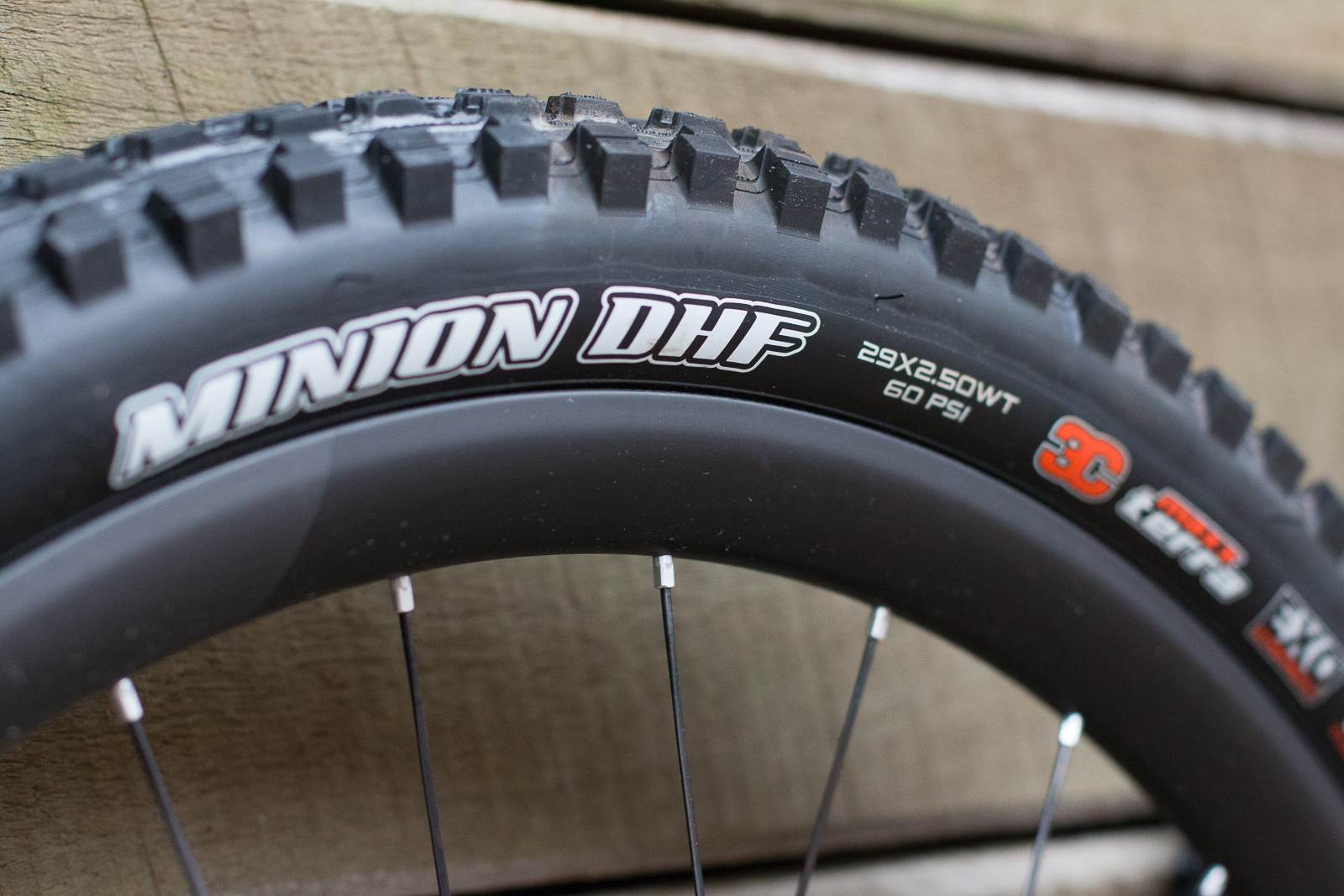
Both tyres seated really easily, and I used some Orange Seal sealant on the inside. This has been the go-to sealant on my workbench since testing it last year.
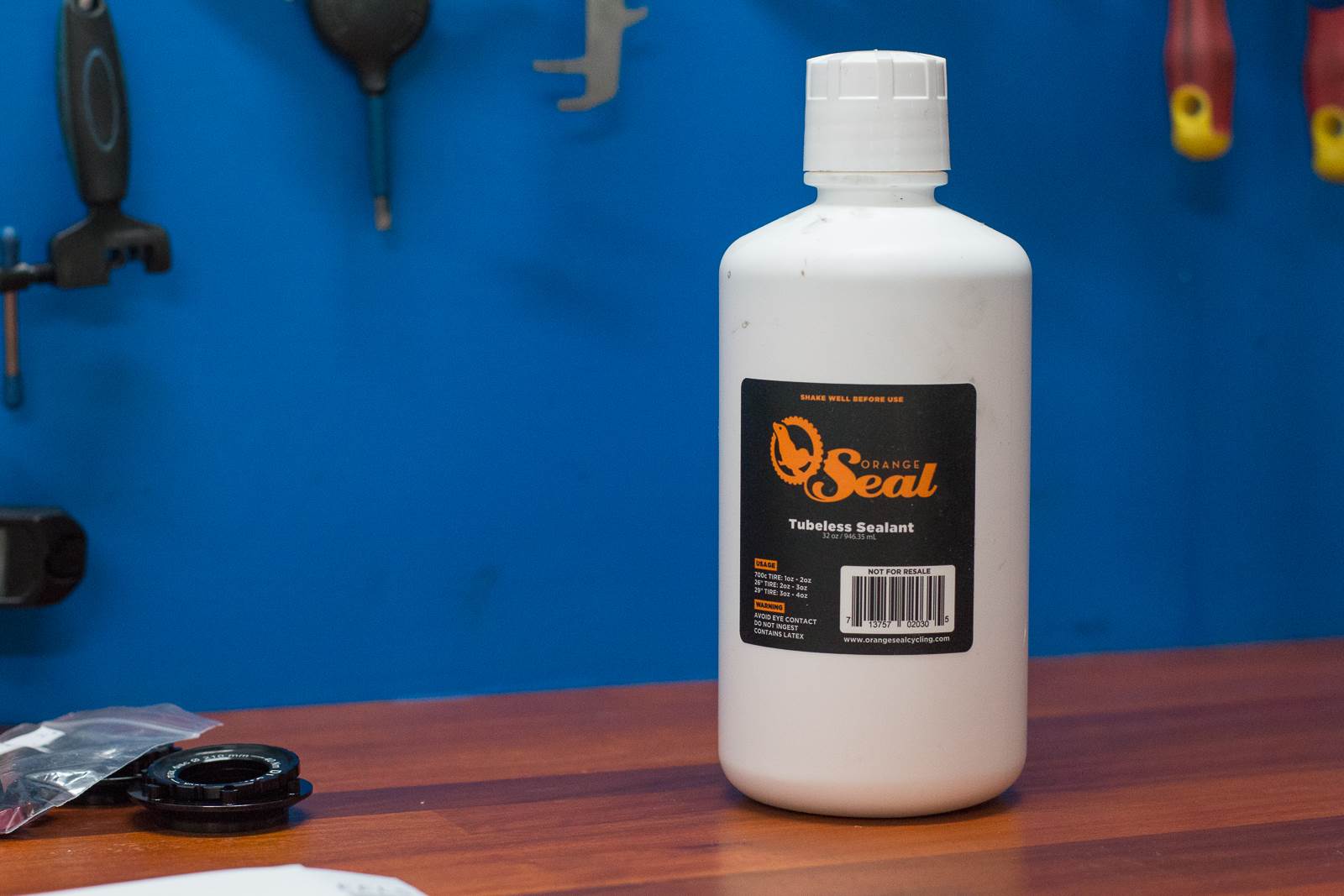
They’re all set and ready to roll. Keep an eye out for the build we are putting together, and also for the 3 sets of DT wheels we will be using for a comparitive rim width test. Watch this space!

